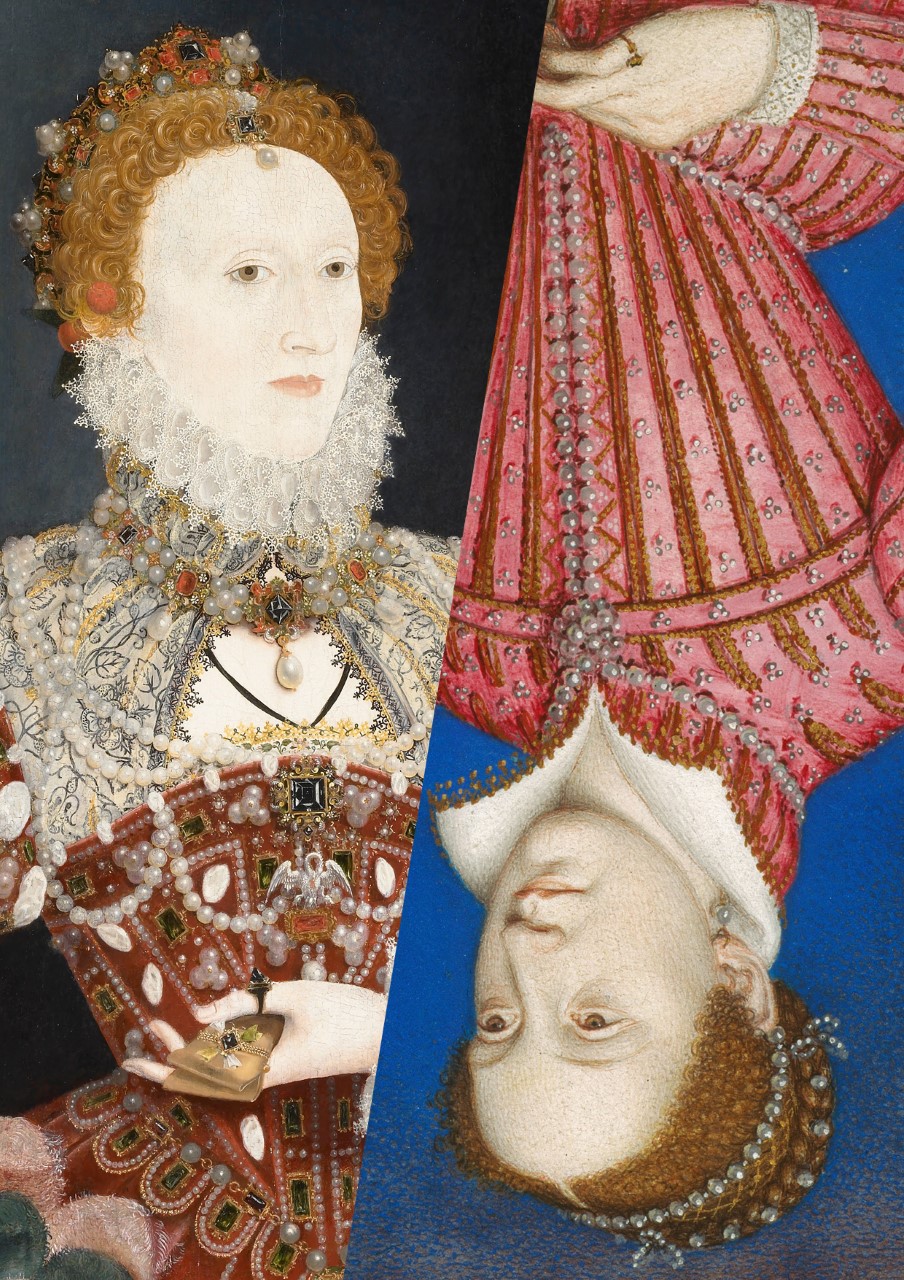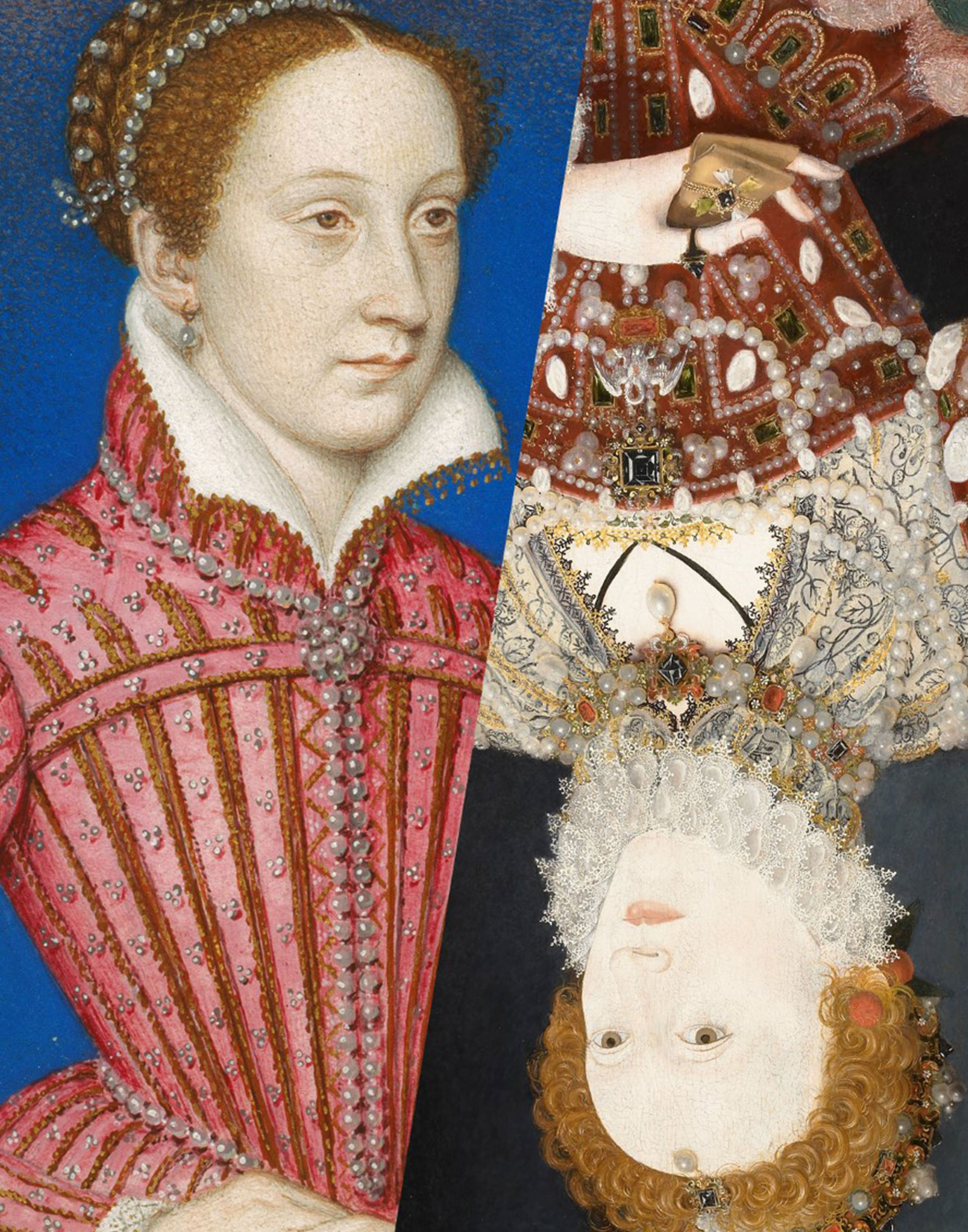
Two Queens of (different) Hearts
Rivals Elizabeth I and Mary Stuart
- From 18 April to 6 May 2024, the third and final part of the Tudor trilogy can be seen at Dutch National Opera & Ballet: Roberto Devereux
Gaetano Donizetti’s Maria Stuarda (DNO 2023 ed.) has one of the most intense passages in opera history. Two female singers stand opposite one another in an emotionally charged duet, which contravened the opera conventions of the time and, partly because of that, enhances the dramatic tension of the opera. After Maria Stuarda grossly insults Elisabetta, the Scottish Queen’s demise is inevitable — a legendary death that has inspired creative works ever since.
Text: Eline Hadermann
Donizetti’s famous scene in which the two queens confront one another, and Maria Stuarda’s attack in particular, begs the question of what really happened in 1587. How hostile were Elizabeth I and Mary Stuart to one another, and to what extent was their rivalry influenced by their position as women in power?
The ‘Virgin Queen’ and her throne
When Maria Stuarda hurls “Vil bastarda” at Elisabetta, her words are more than just a venomous insult. She is referring to Elizabeth’s turbulent family history and its influence on her status as a ruler. As the daughter from the second marriage of the Tudor king Henry VIII — notorious for his many marriages, the wives he divorced or had beheaded and his break with the Catholic Church to enable the first divorce — Elizabeth was tainted with the stain of bastardy. After all, when Henry VIII declared his marriage to her mother Anne Boleyn annulled (and then had her beheaded), that made Elizabeth illegitimate and consequently no longer a valid heir to the throne. Even so, in 1543 Henry VIII issued the Third Succession Act, making Elizabeth and her half-sister Mary Tudor heirs to the throne again after their younger brother Edward VI.
Elisabeth was in a precarious position when she ascended the throne: as a bastard, as a Protestant, but also as a woman
This was the basis on which Mary Tudor claimed the throne after the death of Henry VIII’s only male heir. As the Catholic progeny of Henry VIII’s marriage to his first wife Catherine of Aragon, Mary tried to restore Catholicism by instigating a fervent persecution of Protestants. This regime appealed to English Catholics who had not yet recovered from the trauma of the Act of Supremacy, which had made the monarch the head of the Church, or the scandal caused by Henry VIII’s marriage to the Protestant Anne Boleyn. When Elizabeth ascended to the throne in 1558 as the only surviving Tudor, the stigma of bastardy, her Protestantism and the fact that she was a woman all meant her position as the new monarch was far from secure.
The body of a woman, the heart of a man
That Elizabeth I was able to rule for so long over a country that experienced a golden age during her reign has given her to some extent the reputation of a strong feminist avant la lettre. It is true that as a female ruler, she had to keep a cool head in the face of the many preconceptions about women in positions of power. The Scottish theologian John Knox wrote in his polemical tract First Blast of the Trumpet Against the Monstrous Regiment of Women (1558) that “to promote a woman to bear rule, superiority, dominion, or empire above any realm, nation, or city” was not only “repugnant to nature” but also implied “the subversion of good order, of all equity and justice”. His words reject the possibility of legitimate female rule and are an expression of the patriarchal society in which Elizabeth had to operate. “Good order”, in which men are the natural rulers in the private sphere, is disturbed as a matter of principle when a woman has that authority in the public sphere rather than a man.


‘I may have the body of a weak and feeble woman, but I have the heart and stomach of a king’
However, Elizabeth’s policy cannot be characterised as a feminist response demonstrating the inextricable link between femininity and political power. Far from it: because she realised only too well how her gender undermined her position, she often explicitly distanced herself from her femininity. She started to compensate for her somewhat feminine court, which had focused on the arts and the glorification of beauty, with what is sometimes termed “political androgyny” in the literature. For example, in 1588 she apparently urged her troops on with the words: “I may have the body of a weak and feeble woman, but I have the heart and stomach of a king”.
The people of Europe were well aware of that male heart, for they called her “the female Prince”. That political androgyny allowed Elizabeth to justify why she forswore marriage — after all, a marriage would mean sharing the throne with her male consort, who would have to rule over her according to the rules of the patriarchy. Elizabeth thus became known as the Virgin Queen, a woman who by ruling like a man was not only unblemished physically and morally but also in her politics: pure in nature.
Clash of the queens
However, her purity was put to the test when Mary, Queen of Scots arrived on the scene. Mary Stuart embodied various threats to Elizabeth’s political power. As the Catholic, legitimate granddaughter of Margaret Tudor (Henry VIII’s sister), she was seen by the rest of Catholic Europe as the only lawful heir of the infamous Tudor monarch — a legitimacy that they felt had to be accorded a female ruler in this exceptional situation. Also, unlike Elizabeth, Mary Stuart remained true to her feminine nature as a monarch; down to this very day, she is described as a queen who ruled from the heart — a female heart. She made rash choices in love — she married the main suspect in the murder of her second husband — and saw her political power disintegrate until she was forced to abdicate in 1567.
When Mary Stuart then asked Elizabeth for protection in her court, Elizabeth was tormented by doubts about the true nature of Mary Stuart’s intentions. For nineteen years, Mary Stuart was held under house arrest in Fotheringhay Castle in Northamptonshire because of the possibility she would become involved in a conspiracy against the English Queen. In the correspondence between the two queens during Mary Stuart’s exile from Scotland, there is no trace of rivalry. The tone is constantly amicable, if somewhat distant. Although overtures were often made for a meeting between the two women, that never happened. However, Elizabeth was forced to end her ‘pure’ friendship: in 1587, she signed Queen Mary’s death sentence — reluctantly, but pressured to do so by her (male) advisors.
So what Donizetti depicts in his lyrics, staging and music as an acerbic ‘bitch fight’ was in historical fact a power struggle that had its roots in Elizabeth’s childhood and ended with Mary Stuart’s death. We can never know for certain what the real reasons were why the Virgin Queen eventually decided to have her royal rival beheaded, but it is unlikely to have been a personal feud between two ‘lionesses’ that simply reached a boiling point. Rather, it was the complex interplay of gender and power that inspired Donizetti to give free rein to his fantasy — as this story has done for so many people down the centuries.
Maria Stuarda was staged in 2023 at Dutch National Opera & Ballet